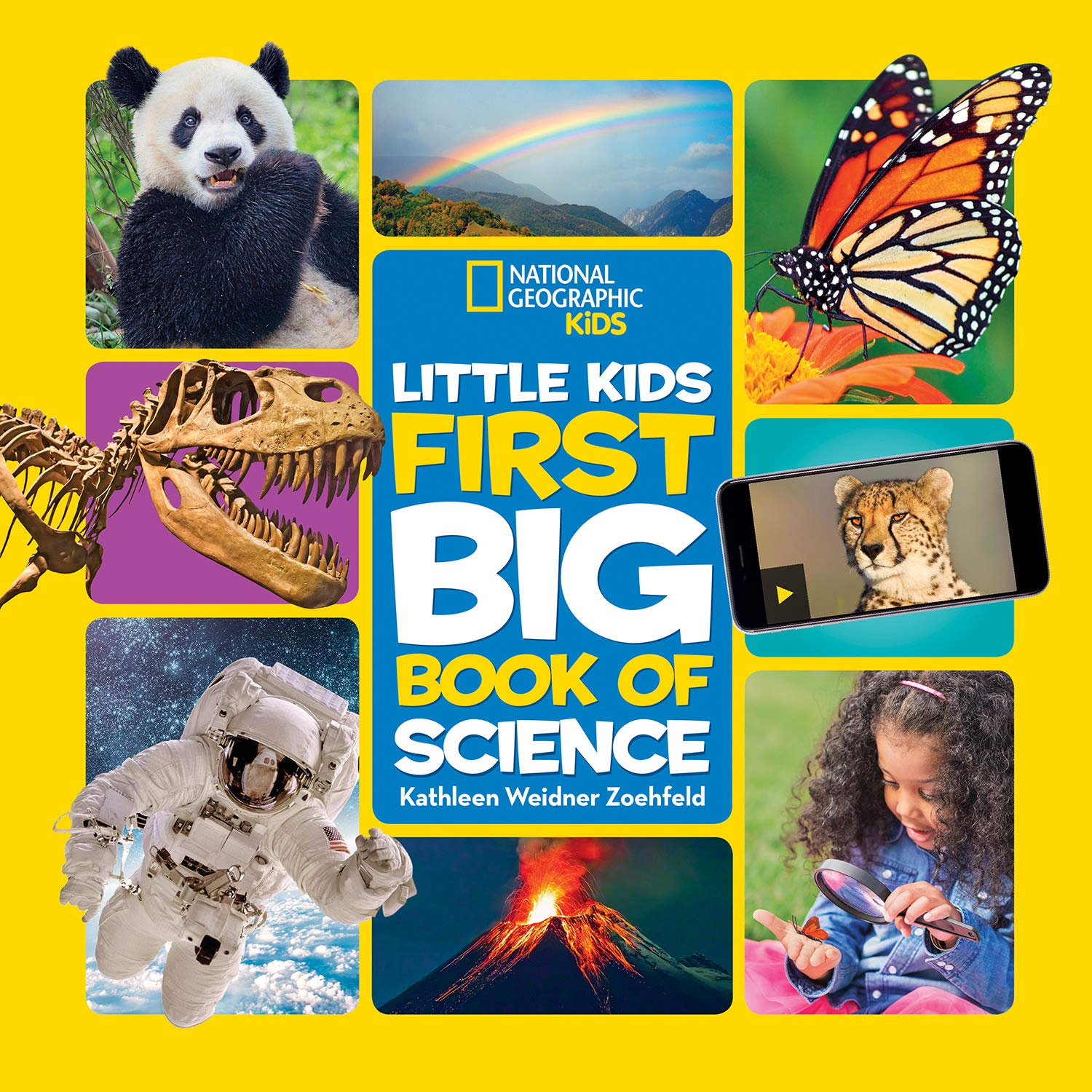Book Review: “Little Kids First Big Book of Science” from National Geographic Kids
National Geographic Kids introduces children to the fundamentals of scientific exploration through a new picture book called Little Kids First Big Book of Science. Kids are naturally inquisitive and this book shows them how to turn their everyday questions into experiments. It also lets them explore the different scientific disciplines to inspire their them to dig deeper.
The first thing parents should know is that this book uses full color images on every page with fact bubbles and explanations of big words that will be new to a child’s vocabulary. The text keeps concepts simple, serving as an introduction to these concepts with some relatable examples. Whether they wait to dive deeper into these subjects until advancing to science lessons in school or start exploring additional topics on their own, it exists to lay a well rounded foundation.
The book is divided into five chapters. The first teaches kids about science in general and things they can do to become scientists. It mostly focuses on ways to examine and document the world around them, as well as breaking down the branches of science and the types of scientists within.
Chapter two is about life science, also known as biology and the disciplines within it. Kids will learn about doctors, as well as scientists who study animals, insects, sea creatures, and plants. This chapter is likely the one that kids will connect with most. For example, a child’s love of butterflies can be used to relate to entomologists.
Chapter three is titled “Earth and Space” and mostly stays focused on our own planet and the unique ways scientists study it. The most applicable part of this chapter is about weather, but kids will likely find the sections on volcanoes, earthquakes, and space to be pretty exciting.
Chapter four is about physical science, including electricity and sound waves. The final chapter is on great inventions and is pretty short. At the end of the book is a page of tips for parents to continue their child’s scientific education, as well as a list of additional resources you might want to explore.
Every so often, the book provides ideas for kids to perform their own science experiment. Oftentimes this includes parental involvement, bound to create some sweet memories. An example is charting the phases of the moon of using kitchen ingredients to make a chemistry experiment. I recommend getting creative as well. You could pair a movie night with concepts from the book, such as Pixar’s Finding Dory which features Ichthymologists (zoologists who study fish) or Fox’s Ferngully for the section about seeds.
Kids and parents will have a lot of fun with National Geographic Kids’ Little Kids First Big Book of Science. It encourages them to keep asking questions, but also teaches them how to find the answers through observation and experimentation. It may even inspire future generations of explorers who will help change the world.



